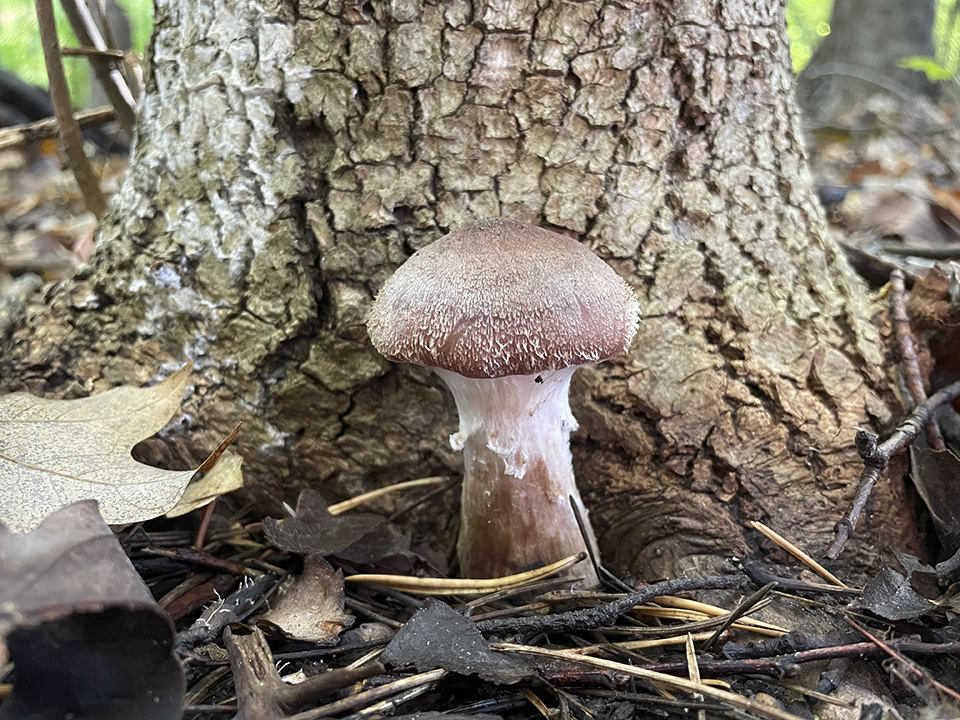
In the early 1990s a huge underground mycelium of Bulbous Honey Fungus (Armillaria gallica) was found covering 37 acres in the Upper Peninsula of Michigan. Molecular genetics showed the underground part of the fungus (mycelium) to be about 1,500 years old. It came to be known as the “Humongous Fungus”, became a popular tourist attraction, and spawned a annual fungus festival. At the time of its discovery it was thought to be the largest organism on earth, a title formerly held by Pando, the quaking aspen grove in Utah. Since that time, three other organisms have held that title. The current (2022) holder is the marine plant Posidonia australis in Shark Bay, Australia.
Bulbous Honey Fungus is a common, late season, gilled mushroom occurring in Europe, Asia, and North America. It appears in late summer and fall growing on the ground attached to underground roots, on stumps and logs, and on the base of living trees.
The mature cap is broadly convex to almost flat, pinkish-brown or brownish-yellow, and covered with slender fibers. The stalk is thick and expanded at the bottom, appearing club-shaped. The flesh is edible when cooked and has a mild to bitter taste.
http://www.minnesotaseasons.com/Fungi/Bulbous_Honey_Fungus.html
